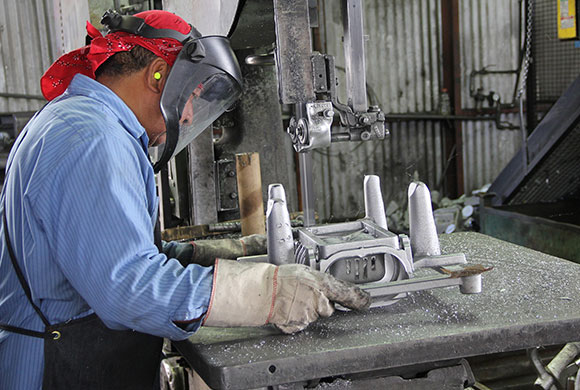Mobile:+86-311-808-126-83
Email:info@ydcastings.com
Jul . 10, 2024 16:30
Back to list
Creating a title about turbine housing Understanding the Function and Importance of Turbine Housings in Machinery.
A turbine housing is a crucial component in a turbocharger system, which plays a vital role in increasing the engine's power output. It is designed to house the turbine wheel and direct the exhaust gases towards it, providing the necessary energy to drive the compressor wheel.
Turbine housings are typically made from high-grade materials such as cast iron, stainless steel, or even exotic materials like titanium. They are built to withstand high temperatures and pressures, as well as the harsh conditions of the engine bay. The design of the turbine housing is critical in determining the turbocharger's performance, efficiency, and durability.
One of the key considerations in turbine housing design is the size and shape of the volute, which is the curved passage that directs exhaust gases towards the turbine wheel. The volute's size and shape are optimized to ensure that exhaust gases flow smoothly and efficiently, maximizing the turbine wheel's energy extraction and minimizing pressure losses.
Another important factor in turbine housing design is the A/R ratio, which refers to the area of the turbine inlet divided by the radius from the center of the turbine inlet to the center of the volute. The A/R ratio influences the turbocharger's response, efficiency, and power band. A lower A/R ratio provides faster spool-up but may limit top-end power, while a higher A/R ratio offers better top-end power at the expense of low-end response

turbine housing. Turbine housing design also considers other factors such as wastegate placement, heat management, and material selection. Wastegates are used to control boost pressure by diverting some of the exhaust gases away from the turbine wheel. Proper wastegate placement and sizing are critical to ensure optimal boost control and turbocharger performance. Heat management is essential in turbine housing design to prevent overheating and ensure long-term reliability. Proper insulation, materials selection, and cooling strategies are essential to manage the high temperatures generated by the exhaust gases. Overall, the design of the turbine housing is critical in determining the turbocharger's performance, efficiency, and reliability. It is a complex and intricate component that requires careful engineering and optimization to maximize the engine's power output while ensuring long-term durability. With advances in materials science, manufacturing techniques, and computational fluid dynamics, turbine housing design continues to evolve to push the boundaries of performance and efficiency in turbocharger systems.

turbine housing. Turbine housing design also considers other factors such as wastegate placement, heat management, and material selection. Wastegates are used to control boost pressure by diverting some of the exhaust gases away from the turbine wheel. Proper wastegate placement and sizing are critical to ensure optimal boost control and turbocharger performance. Heat management is essential in turbine housing design to prevent overheating and ensure long-term reliability. Proper insulation, materials selection, and cooling strategies are essential to manage the high temperatures generated by the exhaust gases. Overall, the design of the turbine housing is critical in determining the turbocharger's performance, efficiency, and reliability. It is a complex and intricate component that requires careful engineering and optimization to maximize the engine's power output while ensuring long-term durability. With advances in materials science, manufacturing techniques, and computational fluid dynamics, turbine housing design continues to evolve to push the boundaries of performance and efficiency in turbocharger systems.
Latest news
-
Why Should You Invest in Superior Pump Castings for Your Equipment?NewsJun.09,2025
-
Unlock Performance Potential with Stainless Impellers and Aluminum End CapsNewsJun.09,2025
-
Revolutionize Your Machinery with Superior Cast Iron and Aluminum ComponentsNewsJun.09,2025
-
Revolutionize Fluid Dynamics with Premium Pump ComponentsNewsJun.09,2025
-
Optimizing Industrial Systems with Essential Valve ComponentsNewsJun.09,2025
-
Elevate Grid Efficiency with High-Precision Power CastingsNewsJun.09,2025
Related PRODUCTS











